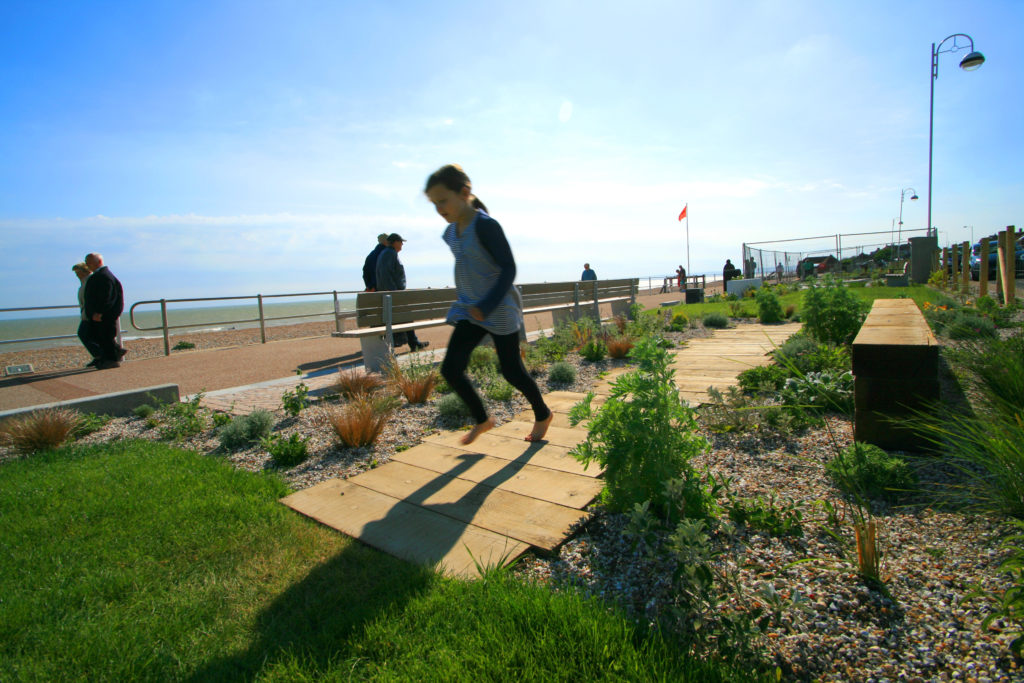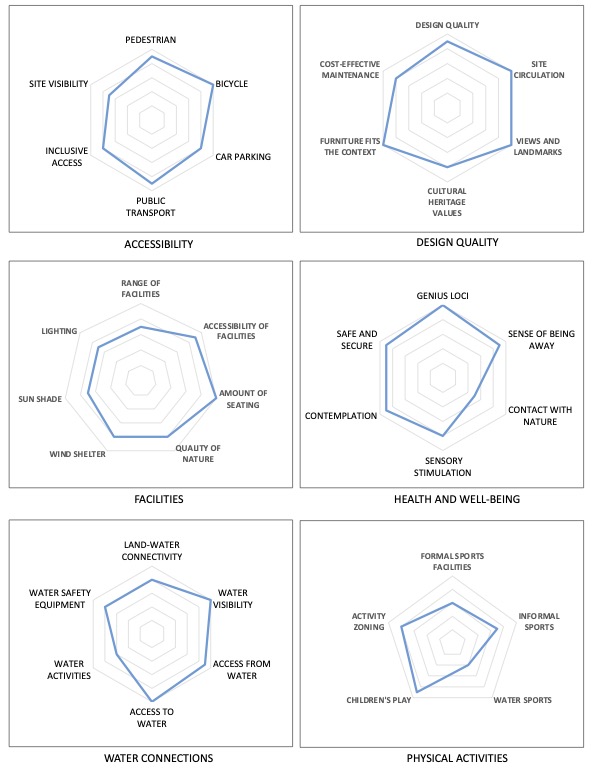
Architect
HTA Landscape Design
Type of Area
Sea
Land/water interaction
Sandy beach
Promenade
Built Environment Types
Highly built
Low green
Scale of Impact
Block
District/neighbourhood
City
Intervention Scale (Spatial)
Linear development – multiple interventions
Project Types
Outdoor recreation
Seafront development
Urban design
Urban/ Rural
Inner urban area
Visibility and Openness
Fully open
Full horizon
Reclaiming the promenade
This shorefront project formed part of Bexhill-on-Sea’s urban renewal and development plan. The nearly 1km of English Channel shorefront was transformed into a diverse linear parkland by simple but colourful planting of salt resistant plants interspersed with seating, children’s play features and shelters designed in an RIBA competition. This development connects the shorefront to the popular De la Warr, Art Deco pavilion, which has been restored and is now used as a contemporary art centre.
HTA Landscape, together with the architects Stanton Williams and engineers Alan Baxter Associates, took the unusual step of not submitting designs for the development but a planned process. This process consisted of consulting Bexhill-on-Sea inhabitants to ask them what was needed and from this arose the designs for the project. The development has transformed a neglected grass border into a more interactive and visually interesting space.
Savings were made by paving over the previous promenade and integrating a low irrigation planting strategy that incorporates plants with diverse textures and varied colours which are suitable for the coastal environment. The planting focused on a summertime display only, as this is the time of greatest use for the promenade. A water feature provides entertainment at the refurbished Colonnade, another listed building on the shorefront, and this now provides space for refreshments and a refurbished coastal office.
Timber and concrete has been used extensively throughout the project to provide seating and shelters for people and the plants. Timber play elements have also been interspersed along the lawn, such as balance bars, wobble boards and so on. Previous seating has been incorporated into the new design and additional flexible seating provided, including along the low walls that provide terraces for some of the planting. Visitors therefore have plenty of space to enjoy the view and eat their picnics. The site promotes various activities such as swimming, walking, jogging, playing, sitting, eating, socialising, contemplating etc. Short-term parking is provided that also serves as an informal gathering point for surfers.
Perception and Meaning
Imageability
Sense of place
Place identity
Health and Wellbeing
Place affordance
Increased physical activities
Aesthetic experience
Interaction with Water
Visual
Tactile – fully in water

Website of the project:
https://www.hta.co.uk/news-description/hta50-bexhill-sea
Google map reference
The project is rated highly for almost all aspects apart from formal sports, which are absent. Accessibility to the promenade is high, with wheelchair friendly surfaces and safety railings to prevent hazard. However not all of the planted areas are accessible to wheelchair users, limiting the use for children with disabilities to some of the play areas. The place is also easily accessed from the nearby streets and connected to pedestrian and bicycle routes.
Cultural heritage is also high as this raises the profile of the promenade, a feature of many seaside towns, as well as connecting the route to two renovated and listed buildings. The promenade area therefore contributes to the genius loci of the area helping to restore its status as a more vibrant seaside town.
The refurbished sailing club facilities provides access to formal sports complementing the many opportunities for informal sports, children’s play and recreational activities that the promenade itself supports.
